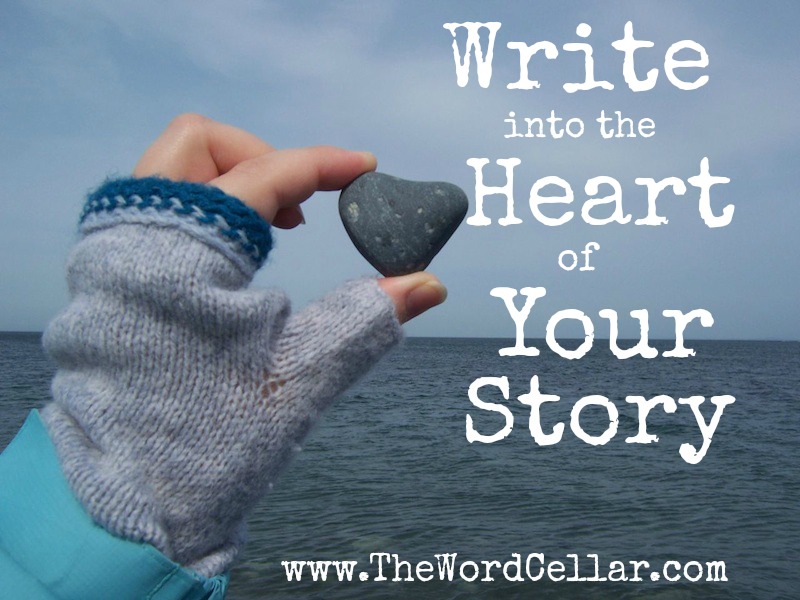5 Ways to Find Your Story's Heart
 Thursday, January 29, 2015 at 6:27PM
Thursday, January 29, 2015 at 6:27PM 
Writing true stories is about more than reporting the facts, it's about creating art from real life.
And art isn't just about capturing what happened. It's about making sense of what happened. It's about asking the big (and small) questions, looking for meaning, making connections, and digging deep.
Here are five ways you can write beyond the facts and into the heart of a story.
1) Create meaning, not morals.
Give your readers enough meat of the story and its implications to help them understand why the story matters. But don't turn a story into a Sunday School lesson. Nobody likes a moralizing know-it-all. (Trust me, I know; I've been one.) Trust your readers to figure things out, but don't make them do the creative equivalent of quantum physics to understand what the story means.
2) Use details.
Great stories include details. But not too many. Or too few. And only the important ones. All presented in the best way. Yikes. So how do you tell how many and which details to include? It's different for every writer and for every piece of writing, but there are a few things to keep in mind.
- Details should create texture and interest within a story.
- Details should focus the readers' attention on what matters.
- Details should add to the artfulness of what you're writing.
- Think about frame your paragraphs as you would frame a photograph.
- Use spectacular and specific details to draw in readers and immerse them in the world you're recreating.
- Be selective: Don't try to capture the whole world at once, not even when you're writing true life stories.
3) Cross the personal-universal bridge.
Even when you're telling an intimate story about a unique experience, readers should find something in it to relate to as fellow humans. But again, beware of moralizing here! Don't build a literal bridge that points out the obvious or talks down to the reader. Oddly enough, the more specific your details, the more universal your story can become.
4) Stay focused.
The focus of a story determines the meaning, the details, and the bridge. I usually don't know a story's focus until I've written a large chunk of it. Only after sketching out and connecting ideas do I find a story's heart. I've rewritten essays many times before I found their real essence. A story can contain a lot of seemingly disparate elements, but you need to know how they fit together. If you don't know -- at least on some intuitive level -- your readers won't know either. Keep writing until you find that focus and fit.
5) Be True.
That's "True" with a capital "T." This may be the most important point of all. Your story needs to feel True on the page, in your mind, and in the eyes of your readers. I've written stories that are technically true by dutifully capturing my thoughts or the true-to-life details of a scene. But the scene fell flat and veered outside the heart of the story. Annie Dillard says it best in her essay "Notes for Young Writers":
"The work's unity is more important than anything else about it. Those digressions that were so much fun to write must go."
This is another one of those things that you learn by doing. The more you write, the easier it will be to decipher what's True -- and to sacrifice anything that doesn't serve the story. (Try to get your hands on Dillard's short essay. It's some of my favorite writing advice. You can find it in Issue 15 of the literary journal Creative Nonfiction.)
Want to learn more about writing into the heart of your story? We'll explore each of these points in more depth and learn others in Write into the Heart of Your Story. The next session starts Saturday (February 1).
 This online class gives you a treasure trove of proven techniques to help you become a better writer. You'll learn how to write with more depth, more clarity, and more power, so that your stories connect with readers.
This online class gives you a treasure trove of proven techniques to help you become a better writer. You'll learn how to write with more depth, more clarity, and more power, so that your stories connect with readers.
Course topics include:
- Understanding the two essential building blocks of stories
- Using imagery and metaphor to create meaning
- Choosing and "slanting" details to create connection with readers
- How to use (or bend) writing "rules" to capture emotions in words
- Dealing with common writing fears and challenges that hold you back
- Embracing your personal quirkiness to enhance your writing
Registration for this 4-week class is $49 and includes 12 writing lessons, inspiration, resources, and an online community. Please join me for a month of learning and writing into the heart of your stories.


Reader Comments (1)
XO,
Jodi